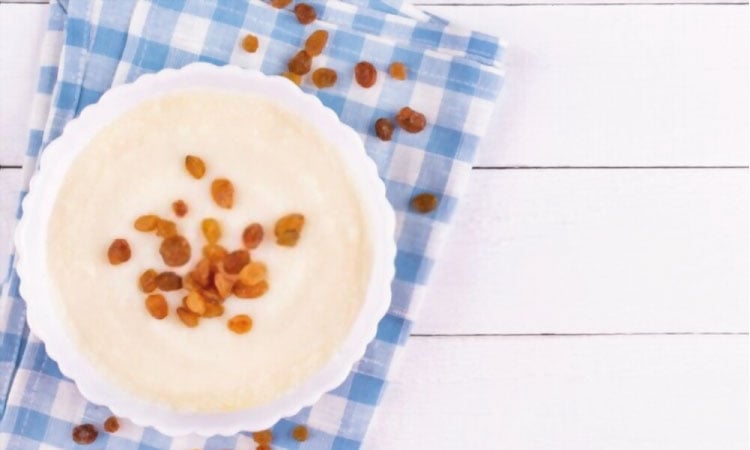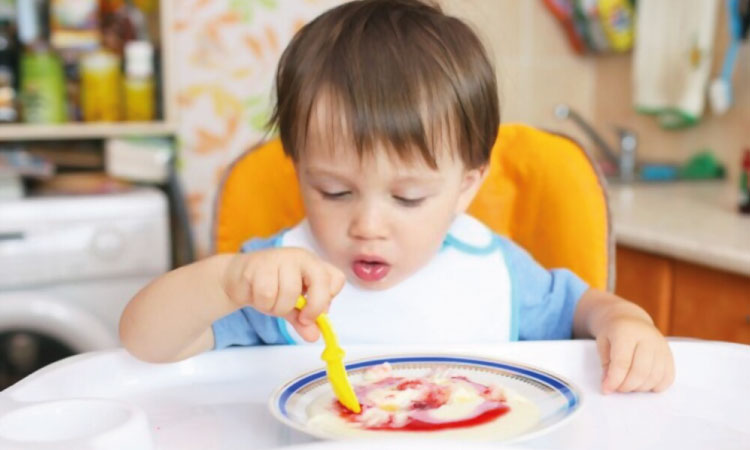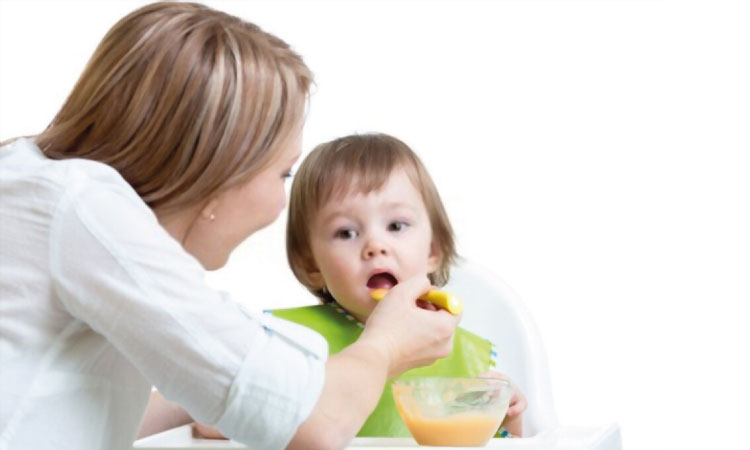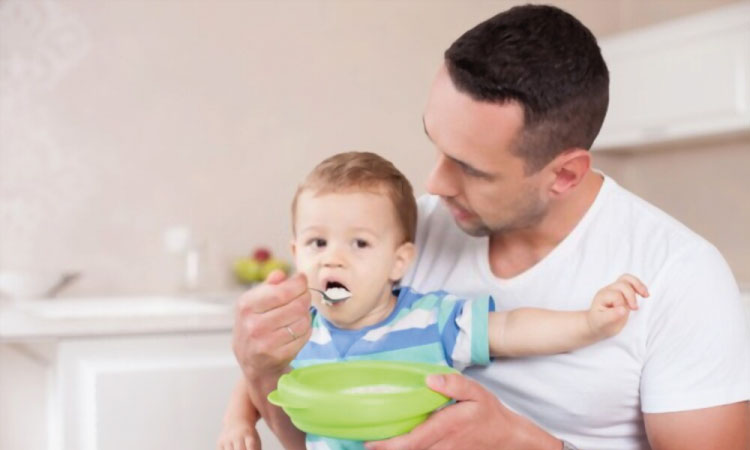Sooji for babies has often been one of the first choices as a first food for babies, especially in Northern India. It is regarded as an excellent way to incorporate wheat into their diet. Sooji is one of the food ingredients that are easily digestible and hence preferred as one of the first foods for babies. This staple food can be used in many different ways and is easy to store and cook. We can use it in many different foods, like oatmeal, sheera, upma, and halwa, which shows how versatile it is. If you’re looking to add diversity to your baby’s diet and provide them with a full food option, sooji is a great choice.
However, sooji is strongly advised to be avoided by infants who are gluten sensitive. This component does not have a very high nutritional value. If you cook this component with other nutritious ingredients like vegetables and milk, for example, you may boost the total nutritional content while still keeping your infant happy and satisfied.
What Is Sooji?
Semolina or sooji is a good option for solid meals once the baby starts intake of solids. Sooji is simple to digest and babies (and adults) find it delicious. Sooji is a high-quality grain. Sooji is prepared by grinding wheat into a coarser grain. The mixture is next sifted to eliminate both germs and bran. In Northern India, they call it sooji, whereas in southern India, they call it Rawa. Semolina is another name for it.
Semolina is a wheat grain endosperm that has been coarsely mashed. This coarsely milled wheat is used to make a variety of desserts. It is also beneficial for immune system development and digestive health. As a result, you may offer it to an infant in the same way as you would any other wheat product, such as cereal.
Related Reading: Everything About Annaprashan – First Rice Eating Ceremony
When To Introduce Sooji to Your Baby
The apt time to introduce sooji to a baby is when they are 6 months or older. In this stage, the infant begins to eat solid foods for the first time. Many mothers wait another month to give sooji gothambu to babies. However, sooji should be introduced gradually over the course of four days so that any potential allergic reactions can be identified. It shouldn’t be given to the baby at all if there are any signs of allergies or reactions.
One can make sooji for babies in many ways. Even though semolina porridge is the simplest way to introduce sooji to babies, you can prepare sooji upma, sooji idli,-and sooji cheela for babies, depending on their age. Sooji kheer for babies is excellent if your baby has a sweet tooth. Also, it is easiest to digest.
Health Benefits Of Sooji For Babies

Now that we have established that semolina is a safe option for babies and has some nutritional value as well, let us tell you it is easy to cook and digest as well due to its fine texture. In case the baby feels hungry suddenly, sooji is a quick option that can be prepared.
Made from durum wheat, sooji is not very refined and doesn’t go through a lot of processing. This is one reason why it has a high nutritional value. It is a great source of healthy carbs, iron, calcium, magnesium, zinc, phosphorus, vitamin B, and many other minerals and vitamins that your baby needs1.
Likewise, sooji has many positive health effects on infants. Several of the benefits of sooji for babies are broken down into their respective categories below.
1. It helps in preventing anemia
When the body doesn’t have enough functioning red blood cells, it develops a condition known as anemia. The red blood cells transport the oxygen that the body needs to the tissues. A diet that does not have enough iron is the most common cause. Iron requirements increase significantly during times of rapid growth.
Iron is stored in the bodies of newborn babies when they are born. Infants and toddlers have a high daily requirement for iron absorption due to the rapid rate at which they develop. Babies between the ages of 9 and 24 months are the most likely to develop iron deficiency anemia2.
- Sooji is an excellent source of iron. 100 grams of sooji contain 1.6 grams of iron3. It helps produce hemoglobin in the red blood cells
- The hemoglobin, in turn, transfers the oxygen to all distinct parts of the body. It thus helps improve hemoglobin levels and even leads to a healthy heart
2. Helps to prevent constipation
A major concern for the parents is constipation in babies, which is due to the developing digestive system. It is common for babies to not pass stool for 2–3 days. Even with babies, it is always better to take steps to avoid constipation.
- If they eat sooji or semolina, they won’t have this problem, and the baby will be more active. A considerable amount of fiber can be found in a sooji. (3.9 grams of fiber for each hundred grams of sooji)4
- Because of this, digestion of the food is facilitated, and the promotion of healthy bowel movement contributes to the prevention of constipation
- Therefore, giving sooji to babies can help make their digestive systems run more smoothly
Related Reading: 10 Home Remedies For Infant Constipation
3. It is good for immunity and overall health
As the baby’s immunity is still in the process of developing, it is essential to take steps to boost it. Sooji contains essential vitamins and minerals that aid in warding off all types of infections and illnesses5
- Semolina has B6 as well as Vitamin E which are important for the proper growth and development of the baby. Vitamin B6 is good for boosting immunity and Vitamin E helps prevent any damage to cells6
- Vitamin E is even important for the neurological development of the baby as well7
- It contains all micronutrients, such as magnesium, iron, and copper, that are necessary for the development of infant immunity.-These are necessary for physiological processes to work properly as well
- The selenium present in sooji is also good for boosting the immunity of the baby8.
4.-Keeps one fuller so no food cravings
Hungry babies tend to be irritable babies. It is recommended that you give the baby some sooji right before you leave the house if you plan on going out. The baby will be able to feel full for longer.
- Sooji is rich in protein and fiber. 100 grams of sooji provides 12.7 grams of protein and 3.9 grams of fiber9
- Protein and fiber-rich foods, like semolina, are associated with longer satiety and less hunger10
Related Reading: 7 Common Choking Hazards For Babies At Home And What Can You Do?
5. Abundant source of energy
It is critical to include a sufficient amount of carbohydrates in the baby’s diet. The body processes carbohydrates by releasing simple sugars into the bloodstream, which are then taken up by the body’s cells as an energy source.
- Sooji, in this case, is a clever idea since it offers immense energy to the baby as it is carbohydrate-rich
- This even helps with the adequate growth of the baby11
6. Helps in the growth and development of babies
When a child’s growth and development are steady and unabated, it’s a good sign that their health and nutrition are fine.
- A cup of semolina contains about twenty-one (21) grams of protein12 , which is good for muscular growth and for meeting other milestones related to physical development
- Sooji has several vitamins like Vitamin B6, B5, B3, B2, and B1. These are helpful in the healthy growth of the baby
Related Reading: 8 Cues Of A Tired Baby
What To Consider When Choosing Sooji for Baby Food?
Even though sooji is one of the ideal choices for a baby, there are a few pointers that cannot be missed when choosing sooji for a baby. Sooji is nutrient rich but lower in quantity when compared with other grains. So, it should always be given while combined with milk, veggies, fruits, etc.
When picking-sooji for your baby, there are a few more things to think about:
- It is important to consult the doctor before introducing sooji to a baby’s diet
- The doctor should rule out any threats of celiac disease, gluten sensitivity, etc.
- The doctor should be made aware of any allergies in the family
- It is ideal to buy organic sooji for better results, especially for babies, if one can afford it
- The expiry date should always be checked and not missed
- How thick or thin the sooji will be, what amount of water will be needed, and the duration will all depend on the grain size, if it is medium or small
- It is recommended to start with an exceedingly small quantity of sooji and then wait for a gap of three days to check if there are any allergies or reactions
- Continue if no reactions are seen by increasing the quantity gradually and if the baby shows reactions, it is better to stop it immediately
- If the baby has any gastric issues, it is advisable to try it after a few days
- In case the problem continues, it is best to consult a doctor
3 Quick Sooji Recipes for Babies

Since it’s packed with nutrients, Sooji is a great option for infants because it promotes healthy growth and development. However, the proper technique for cooking sooji is essential for achieving the best results.
Here are a few simple ways to use sooji in baby food.
1. Sooji Upma
This is easy to make and is loved by babies. It is suitable for babies aged 6 to 12 months.
Recipe
- Take a pan and to this add a teaspoon of ghee
- Now add a pinch of cumin and mustard seeds. Let them crackle
- To this, add ½ cup hot water and let it come to a boil
- When it starts to boil, add ½ bowl sooji and keep stirring till it boils well
- There should be no lumps in the sooji mixture, and it should be thick in consistency
- After this, add a pinch of asafoetida, ¼ tsp turmeric powder, and salt as per taste
- Cover the pan and put the heat at medium-low
- Finally, cook for five minutes
- The sooji upma is ready to be served
Related Reading: 9 Home Remedies For Colic In Babies
2. Sooji Kheer
This is good for babies who have a sweet tooth, and it is delicious and easy to digest. Preparing sooji kheer is the simplest way to introduce sooji to babies. It is ideal for babies over 6 months.
Method
- Take a pan and add ½ cup sooji to it. Heat the pan and let it roast on low flame
- Take another pan or vessel and add one cup of water and bring it to a boil
- Once it starts boiling add, sooji gradually stirring so that no lumps are formed
- Once all the sooji starts to thicken, add a few drops of ghee to it
- Mix the entire mixture properly and remove it from the heat. Add a pinch of green cardamom powder and ¼ tsp of dry fruit powder
- Now add one or ½ cup breast or formula milk making it thin in consistency
- Do not add sugar if the baby is less than a year old
- One can add fruits if the baby is older
- The kheer is ready to serve
- Be cautious to not serve too hot as it can burn the tongue
- Serve at room temperature
3. Apple Sooji Porridge

This recipe is a different one. It uses no sugar due to the sweetness of the apple in it. It is ideal for babies over 7 months.
Method
- Peel and grate ½ apple
- In another vessel, add ½ tsp ghee
- Add 1 tbsp sooji and roast for a minute while stirring constantly
- When the aroma starts to come from sooji, add ½ cup water and mix well
- Now add grated apples and extra water for the apples to cook well
- After 5 minutes, it should get cooked however it also depends on the type of apples
- Once it is cooked, turn the heat, and add milk if needed
- This kheer can be of thin or thick consistency as per the liking of the child
Sooji is a great choice for food that can be part of an infant’s diet because it is packed with nutrients and provides an enormous amount of energy, both of which are essential for the development of the baby.-One just needs to be careful if they have allergies that could be triggered by it. So, be careful, but make sure the baby can still have fun while eating the right amount.

